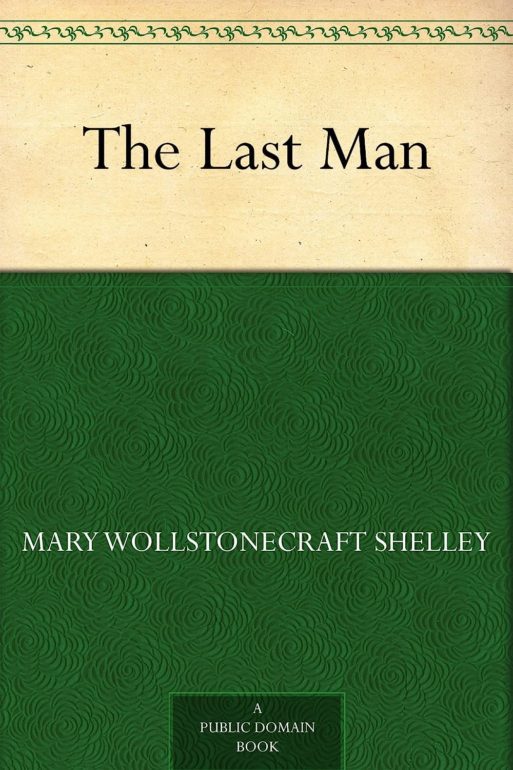 Known widely as the author of Frankenstein, Mary Shelley horrified us with her notorious monster brought to life with more humanity than we care to admit. She wrote much more than Frankenstein, however, and her later, lesser-known novel The Last Man (1826) explores similar thematic concerns, though from a vastly different perspective. The nightmarish story envisions the end of humanity from a ruthless and inescapable plague. Full of heart-wrenching loss, The Last Man tests the resilience of humanity, as well as its capacity for sorrow and grief.
Known widely as the author of Frankenstein, Mary Shelley horrified us with her notorious monster brought to life with more humanity than we care to admit. She wrote much more than Frankenstein, however, and her later, lesser-known novel The Last Man (1826) explores similar thematic concerns, though from a vastly different perspective. The nightmarish story envisions the end of humanity from a ruthless and inescapable plague. Full of heart-wrenching loss, The Last Man tests the resilience of humanity, as well as its capacity for sorrow and grief.
Although the story involves a large-scale apocalypse, the inspiration behind the novel is intensely personal. At the time of its production, Shelley had suffered a series of tragic, insurmountable losses. By 1819, she had lost three children—one at birth and two in early childhood. In 1824, her husband, the major Romantic poet Percy Bysshe Shelley, drowned in a shipwreck at the age of 29. Lord Byron, their friend and fellow poet, succumbed to sudden illness two years later at the age of 36. And bereft of these two luminaries, the world also lost the revitalizing spirit of the Romantic era, with its emphasis on passion, intuition, the greatness of nature and the integrity of the human spirit. It was a pivotal shift in British literature—and a time of unimaginable anguish for Mary Shelley, one of the era’s only survivors.
In the wake of these harrowing losses, she wrote her apocalyptic roman à clef. Set in the 2090s, this remarkable precursor to science fiction relates the political and social tumult in Great Britain and Greece before the arrival of the plague. The narrator, Lionel Verney, is modeled after her, and two primary characters, Alan and Lord Raymond, are based, respectively, on her husband and Lord Byron. Along with these Romantic figures comes the exploration of their ideas as applied to social change. Thus, we see these high-minded, idealistic philosophies dwindle into irrelevance as society falls apart, man by man, until we are left with only the narrator, who believes himself to be the last man on earth. Throughout this process, we admire and then lose character after character. This ongoing tragedy makes us feel Shelley’s own personal struggles as she mirrors her own grief by examining it through all the various angles and scenarios afforded by the realm of fiction.
Because of its heavy subject matter, the story can be hard to get through. And the florid 19th century prose style spills forth in a profusion of images and feelings that, to the modern reader, may feel excessive and wordy. Nevertheless, embedded in the grand vision of the novel are numerous scenes that depict many facets of personal, intimate human grief. There’s Perdita, wife to Lord Raymond, who refuses to leave his grave when he dies. There’s Idris, the narrator’s wife, whose own health wanes steadily as she fears for her children’s lives. Shelley explores several questions regarding the end of life, such as how to tell a fragile, emotionally unstable person about a loved one’s passing. And the reactions to loss and grief are as various as they are in real life: some characters fall into madness, some into cold callousness, others into deeper conviction to help those still alive. Hope waxes and wanes as the characters start to heal, only to have their wounds gashed open by a fresh loss.
Clearly, The Last Man is a dark novel, and by no means the most pleasant, but embedded in its cascade of loss are many rapturous praises to nature, art, beauty, love and friendship. These sparkling moments balance the dark, destructive themes, making them a bit easier to handle. Indeed, only by making us aware of the wonderful things life has to offer can Shelley show us the depth of its tragedy when it is lost. And many readers may find accurate, and therefore comforting, depictions of grief and loss, whether of a spouse, parent or child, and can return to these scenes for comfort and solidarity. Most of all, we see how Shelley herself is able to transcend the overwhelming burden of her grief through its transfiguration into art, beauty and meaning.
You may also like:
- Classic Book Review: “Frankenstein” by Mary Shelley
- Voices Summoned from the Pandemic in Kyrie
- A Shrine for the Lost in The Man with Night Sweats

 The Last Man by Mary Shelley
The Last Man by Mary Shelley



 “Help Me, Helen”
“Help Me, Helen”
 Recovering Cremation Remains After the Los Angeles Fires
Recovering Cremation Remains After the Los Angeles Fires
 “As Tears Go By” by Marianne Faithfull
“As Tears Go By” by Marianne Faithfull














